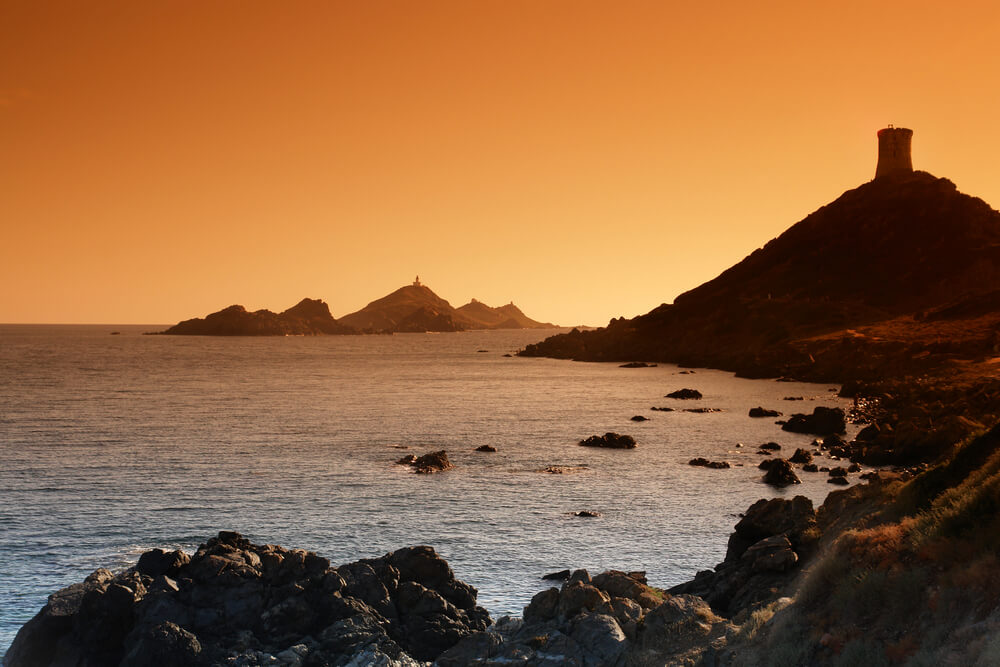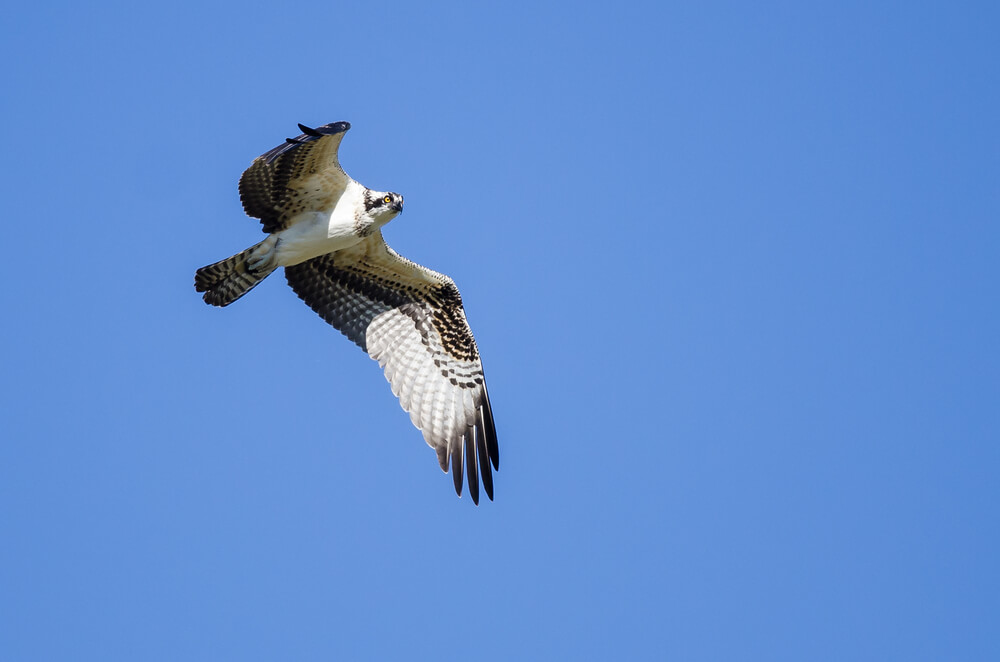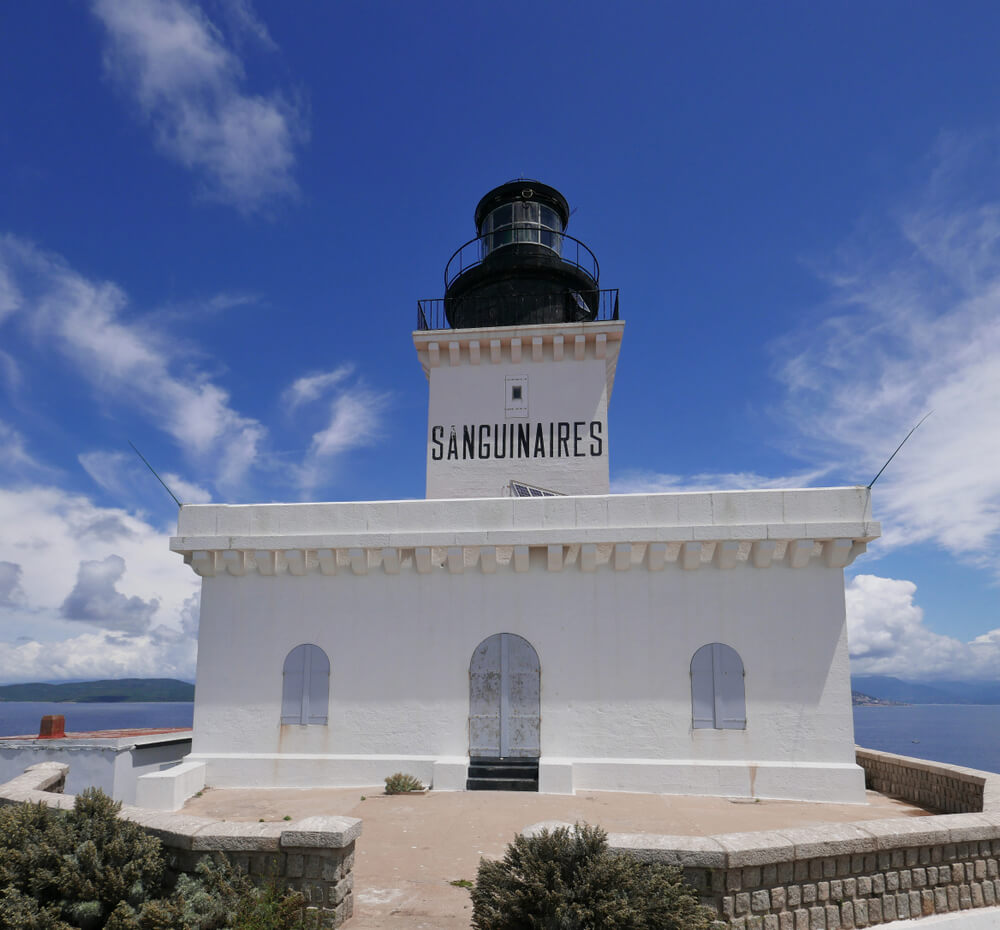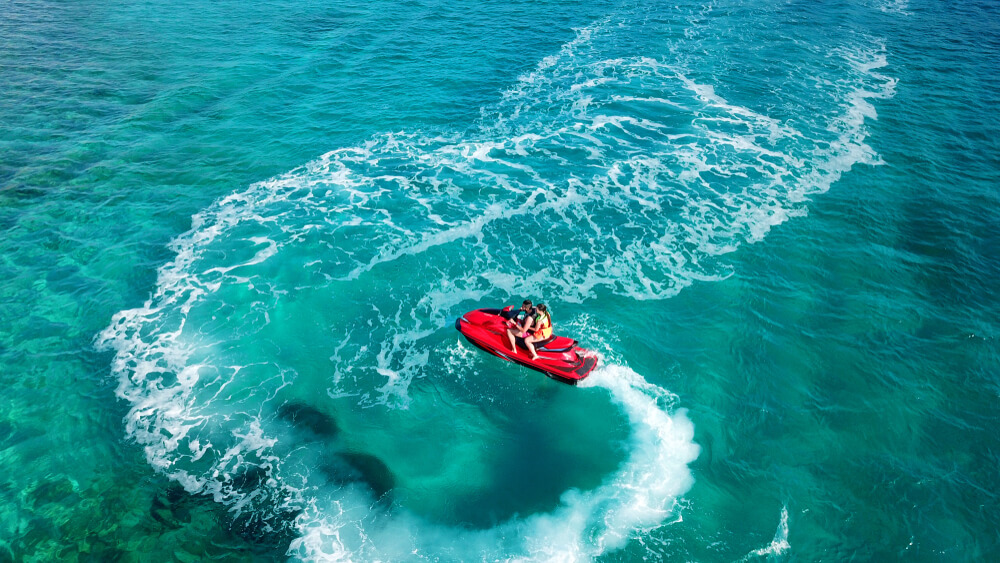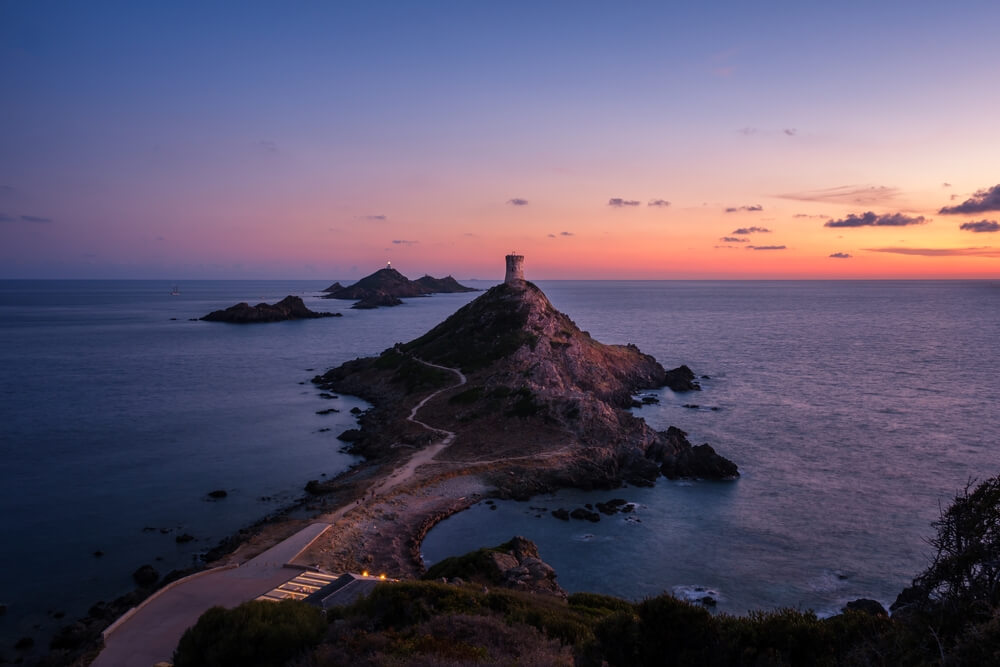Visit the Sanguinaires islands in Corsica
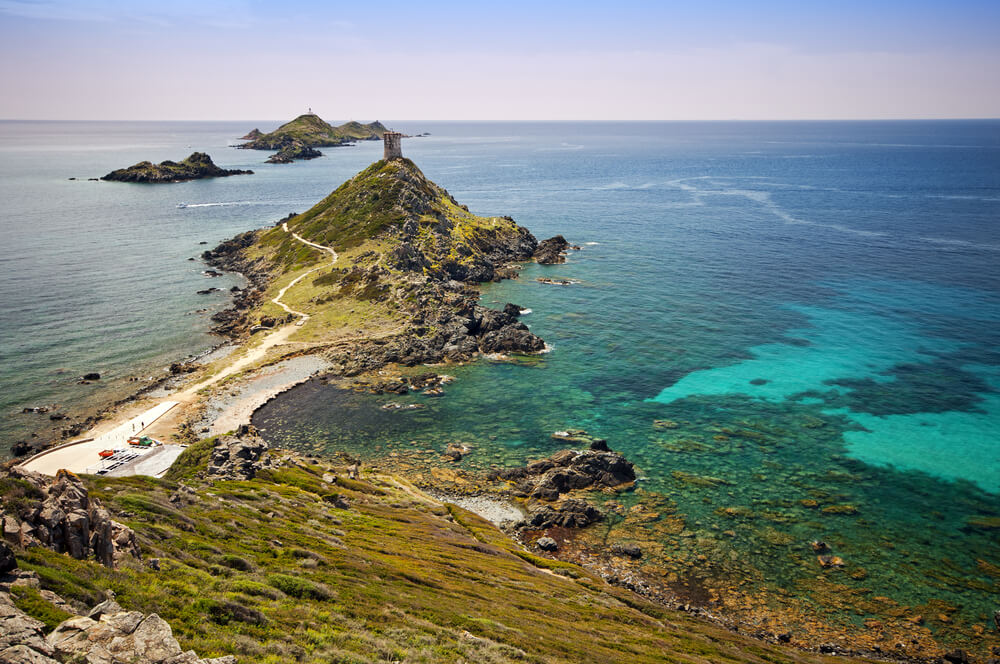
What if your next travel destination was Corsica? Don’t miss the chance to set foot (or even both feet) on the Sanguinaires islands near Ajaccio!
Within a short radius of the Corsican capital, an archipelago of 4 islets can be seen on the horizon. Land in sight, land in sight moussaillons, these are our famous Sanguinaires islands! At the mention of their name and the approach of their coastline, we get a few shivers down our spines. Could it be fear? If so, trade it in for excitement. This string of islands has nothing to frighten you. Instead, it’s full of wonder!
With its remarkable built heritage, exceptionally rich flora and fauna, and breathtaking sunsets, it’s hardly surprising that poets and novelists have found it a source of inspiration.
Alphonse Daudet wrote in his letters: “Imagine a wild, blood-red island with a lighthouse at one end and an old Genoese tower at the other… Another beautiful place I’ve found to dream and be alone”. At these words, there’s no point in resisting any longer. Let’s pull up anchor for a visit to the end of the world on the Sanguinaires Islands.
1. Getting to know each other
4 islets (and 1 rock)
“The ‘figurehead’ of the Gulf of Ajaccio in southern Corsica, the Sanguinaires are an archipelago of magmatic origin stretching off the coast of Pointe de la Parata.
In total, 4 islets and 1 rock make up the strength of this listed and protected site:
- Mezu Mare (or Grande Sanguinaire): The main islet
- Isle of Cormorants (or Isolotto)
- Cala d’Alga
- Porri
Technically, the count is good. But a small bare rock called U Sbiru, located between the Isle of Porri and the Isle of Cormorants, often adds to the numbers.
Why Sanguinaires?
If you’re wondering the same thing, you’re heading straight for deep, mysterious waters. For the simple reason that there is not one, but several theories on the origin of the name given to this sublime natural and maritime site. So, before you embark on any improbable scenarios, somewhere between Peter Pan and Pirates of the Caribbean, discover the 5 explanations that keep this unsolved mystery alive day after day:
A question of rock and light reflection
When the sun shines its last rays, the magmatic rock of the Sanguinaires Islands glows a dark red. By definition, the colour of blood. It’s a dazzling sight, and one for which visitors have already made a name for themselves.
A question of flowers
Among all the plant species that make the Sanguinaires islands a natural area of remarkable floristic interest, there is the Frankenia. More than its pink flowers, it is the leaves of this perennial plant that make the show so magical. In autumn, their green colour gradually turns to bright red, covering the archipelago with a thick carpet of colourful vegetation.
A matter of legend
It is said that in the 16th century, the archipelago already appeared on the maps of the bishopric under the name “Sagonares insulae”. In other words, the “Sagonnaires” islands, in reference to the town of Sagone in southern Corsica. Over time, the name changed and became what we know today: the Sanguinaires Islands.
A question of sick fishermen
In the 19th century, the main islet Mezu Mare became a health post. A lazaretto was built on its heights as a quarantine area to combat the plague. Several coral fishermen returned from Africa to live there. Their blood, black from the effects of the disease, led the inhabitants of the “Isle of Beauty” to nickname them “I Sanguinari”.
2. Archipelago logbook: first appearances, key dates…
Austere, even hostile, intriguing, even frightening, the Sanguinaires Islands took a long time to convince man to venture onto their territory.
Don’t ask us exactly when the archipelago was first visited, because there again the enigma remains. The only information available on this subject is the many travel accounts that certain poets and/or playwrights have been kind enough to share with us. Among the most popular is Le Phare des Sanguinaires, a short story in Alphonse Daudet’s Lettres de mon moulin.
In the 16th century, the Genoese built a tower at the highest point of the Grande Sanguinaire (formerly known as the Sanguinera di Fuori or Sanguinera di Mare). This time, there is no longer any room for doubt: there has indeed been a human presence on these wild stretches of land.
In the 18th century, Mezu Mare was converted into a huge sanitary station on which a lazaretto was built. In this way, all coral fishermen returning from Africa, contaminated by the plague, were directed to this establishment for compulsory quarantine.
From 1865 to 1955, a semaphore (battle station) was set up on the central islet to monitor the maritime approaches and report any enemy activity.
The year 1870 saw the appearance of the lighthouse, one of the site’s major attractions, 80 metres above sea level.
3. What to see and do on the Sanguinaires Islands?
Natural heritage …
Considered a little corner of paradise in the middle of Mediterranean waters, the Sanguinaires Islands boast a fauna and flora that is rare for such a small area. In other words, the setting is magnificent!
In all, 150 rare or endemic plant species have been recorded on Mezu Mare alone. These include the spectacular arum mange-mouches, which can only be seen in 3 places in the world and whose smell is more nauseating than enchanting. Or the wild leek that gives its name to the islet Porri.
In terms of animal species, the site also has something to surprise. Not least because of its impressive colony of seabirds (including the Yellow-legged Gull) and birds of prey (including the Peregrine Falcon, the Red Kite and the Osprey, which is mainly found on La Parata).
Because of their exceptional wild character, which is increasingly exposed to massive numbers of visitors, the Sanguinaires Islands have received a number of recognitions aimed at their preservation: Natural Zone of Ecological, Faunistic and Floristic Interest (ZNIEFF), Natura 2000 Site, Grand Site de France Label…
… To built heritage
Plunging into the tranquillity of the Sanguinaires Islands, Ajaccians and visitors alike will discover a family of unsuspected remains that contribute to the archipelago’s renowned landscape.
- The Genoese Tower of La Parata: built in 1550 by Giacomo Lombardo, a Genoese chief mason. It rises 60 metres above the sea.
- The Sanguinaires lighthouse: The island’s main attraction, built in 1838 and visited in 1863 by French author Alphonse Daudet. When it was automated in 1985, the building’s keepers were the last residents of the archipelago.
- Mezu Mare semaphore: Located on the island of the same name, this battle station was commissioned between 1865 and 1955 to keep an eye on the Gulf of Ajaccio and the surrounding area.
- The lazaretto: Built in 1806 and in operation for 9 years, it was once used to quarantine sailors and fishermen before they entered the mainland.
- The Castellucio Tower: Well-preserved but difficult to access, this fortification stands at the southernmost point of Mezu Mare.
- Saint-Antoine chapel: Located at the entrance to the peninsula, this 1954 chapel still holds a mass every Sunday.
4. Board the boat! Yes, but how? And at what price?
Now that we know a little more about the history and natural world of the Sanguinaires Islands, there’s only one thing left to do: drop anchor!
In fact, the archipelago is closer to the Corsican coast than it seems. Depending on how much time you have, where you are, the time of day and how much money you have in your pocket, there are several ways to visit this island haven of peace.
Getting to the Grand Site
Onwards and upwards
Let’s start with the cheapest option: walking!
- From Ajaccio: Route des Sanguinaires RD111 (2h30 walk)
- From the Bois des Anglais: Sentier des crêtes (4h30 walk)
By road
- On four wheels: 15/20 minutes by car on the Route des Sanguinaires RD111
- On two wheels: 40 minutes by bike along the Route des Sanguinaires RD111
- By public transport: Bus Muvistrada Line 5: departure from Place de Gaulle/arrival at La Parata. Price of single adult ticket: €1
Go directly to the site
The easy way
- From Ajaccio harbour: Boat trip with a stop at Mezu Mare (30-40 min journey). Expect to pay around €30 on average for adults and half that for children.
- From the port of Ajaccio: Hire a skipper (12 places) for a more exclusive and private crossing. Expect to pay at least €50 per person, including an outing, a swim in a creek and a tasting of Corsican products.)
Full of excitement
Want to make your crossing to the islands even more unforgettable, but don’t know how? Look no further than a jet-ski trip!
After a small financial sacrifice of around €115 to €130 on average, you’ll be off on a fantastic ride to the Sanguinaires Islands.
What’s more, depending on the company you choose, you can even enjoy a diving session on the spot. Top of the top!
For more originality
Aaaah sunsets… Those superb phenomena at the end of the day that we never tire of. So much so that they’re flooding the photo galleries of our smartphones. Do you recognise yourself in that last sentence? Well, with the Sanguinaires Islands, you’re in for a treat.
Whatever the season, as soon as twilight falls on the archipelago, a play of light takes place between the sky and the sea. Red, orange, violet and pink are all the colours that the last rays of the sun reveal to us in a marvellous spectacle conducive to escapism, imagination and romance.
To attend, book your place with one of the boat companies offering evening excursions, departing from Ajaccio or Porticcio, for around forty euros on average. A magical moment guaranteed!
In conclusion
The Sanguinaires Islands may be small, but they’re full of wonders. Whether under a glowing light or a thick fog. Their perched structures, rare plants, feathered ‘inhabitants’ and rugged landscapes are a constant spectacle. Anyone who dares to venture there will inevitably leave touched by so much wild, listed and protected beauty! So when do you set sail?
200 audioguided tours for cities all around the world
Download
